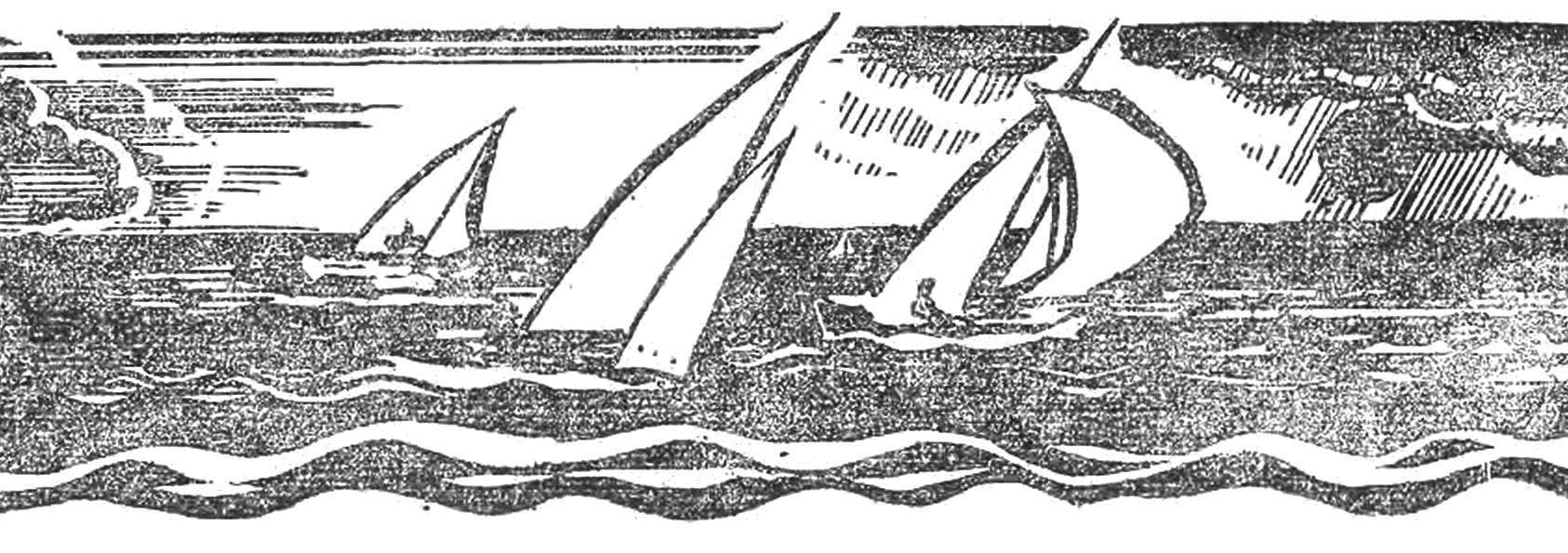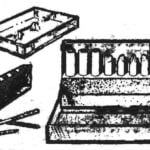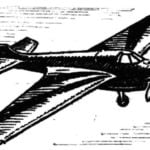 Caravels, clippers and Brigs have long become history, but the sail disappeared with a blue ocean space. It appears not only in the Sunny tropical latitudes, but in the harsh Antarctic waters, and the Arctic circle. Mnogomachtovy training sailboat gigantic and small compared to them, sports yacht to this day ply the seas and oceans.
Caravels, clippers and Brigs have long become history, but the sail disappeared with a blue ocean space. It appears not only in the Sunny tropical latitudes, but in the harsh Antarctic waters, and the Arctic circle. Mnogomachtovy training sailboat gigantic and small compared to them, sports yacht to this day ply the seas and oceans.
On the yacht, description and drawings which we offer, will make a round trip, or a sea voyage, but by building it, you will become familiar with the design features of this type of vessels and sufficiently master the art of managing sails. This yacht is a modern RC model to compete at the highest level.
Model yachts “10” (Fig. 1) — a representative of the so-called formula of the class size limitations are primarily related measurement formula:
Lвл·OBS/0,098313
This formula determines the amount of racing points of the yacht. The numerator in the formula of measurement are selected such a way that a yacht had racing not score more than 10. Of course, yachts of the same class must have the same score.
THE CONSTRUCTION OF A MODEL. Theoretical projection of the “body” of the model shown in figure 2. Technologically easier and faster to applied to the wall of the fiberglass body in the stacked disc, using any epoxy. Then fabricate the keel and glue it as shown in figure 1, to the housing.

Fig. 1. Model yachts of the international class “10”:
1 — TRC, 2 — unit, 3 — boom, 4 — steps, 5 — poles, 6 top guys and 7 guys, 8 — jib-boom, 9 — keel, 10 — Shkotovo gear winch 11 drum Shkotovo winch, 12 — battery power supply, 13 filters of the receiver 14 receiver 15 — servo 16 — tie rod, 17 — wheel 18 — the ballast.
The disc, which wikiepedia case may be neuborne, but in this case it is necessary to accurately planed for counter-templates frames from any soft wood or foam.
Ballast is cast lead. Its shape is shown in figure 2.
Details about the construction of buildings models of fiberglass can be read in the journal “modelist-Konstruktor” No. 9, 1970.
THE MAST AND STANDING RIGGING. The main part of the mast is the mast. It is made most often from wood. It can also be made from aluminum. In all cases the mast will have a lik-a groove for the sail. Figure 1 (top view) shows the cross section of the mast with the face-groove (node 1).
Spurs of the mast rests on the steps, which for yachts is installed on deck or below deck, the Mast is easily removable, which facilitates transport of the yacht.
Mount the mast shown in figure 1.
Boom is attached to the sheet corner of the grotto and the cable Shkotovo winch. In the proposed design swivel (swivel fixture) is missing, but the boom can be rotated from side to side.

Fig. 2. Theoretical projection of “housing”.
Fig. 4. Sails:
a first set b second set; 1 — sail staysail, 2 — bouti, 3 — sail the mainsail
The jib boom is the same as the mainsail design. The cross section of their round.
Standing rigging consists of stays and guys (the jib forestay and Akhter-shtag) keep the mast from bending. Posting guys and stays visible in figures 1 and 3.
RUNNING RIGGING (see Fig. 3) the model consists of a mainsail-mainsheet and jib-sheet. They pass through the blocks on the winch drum Shkotovo (see Fig. 1).
Blocks can be of different types. Often they consist of a pulley, dowel (axle pulley) and cheeks, thus preventing the gear from jump-out. On the model of installed single-sheave blocks.
Of sensible things on the model are the bales (see Fig. 1) for attaching the stays and guys.
It is recommended to have two sets of sails (Fig. 4): the first — for a strong wind, the second for the weak.

Fig. 3. Running rigging mast:
1 — mast, 2 — guys., 3 is a top guy, 4 — staysail-sheet, 5 — top, 6 — sail grotto, 7 — Akhter-forestay, 8 — gaff rig.
On the model, you can set sails from plastic and Mylar films Mylar and nylon fabrics, and metallic Mylar tissue.
When using fabric sails are sewed. In other cases, use sticky tape of polyethylene or Mylar. If sails are used metallized Mylar fabric, from the field of gluing with acetone is necessary to remove the metal covering. The angles of the sails and places exposed to heavy loads, reinforcing, botami— pads made of the material of the sail (see Fig. 4).
The STEERING DEVICE shown in figure 1, has a very simple design. It can be done differently. In all cases the servos it is recommended to use ready. On the output shaft of the gearbox of the steering machine must be at least 1100-1500 g·cm at a speed of relocation (rotation) steering 30-40° per second.
SHKOTOVO WINCH is a motor with a reducer, the output shaft is planted drum Ø 20-30 mm for the winding of the Scots. The drum speed of 1.5 Rev/s, the moment on the gear shaft 3000-5000 g·cm Approximate weight of this winch is 150-200 g.
SYSTEM CONTROL THE SAILS. The sails (see Fig. 1) is Shkotovo winch. When fully wound on the winch drum the sheets of mainsail and jib-boom should be almost in the median plane of the boat. If “poison sheets” (unwound from the winch drum), the mainsail and the jib boom under the pressure of the wind on the sail will be set to the angle required for this course. Rubber guy always keeps sheets taut.
On the top view of figure 1 shows the first variant of the control the sails, figure 5 — the second option.

Fig. 5. The second option control the sails:
and the position of the sails “lasentec” — wind blows into the nose; b, the position of the sail “before the wind” — the wind blowing in the stern; 1 — radio, 2 — elektrobatarei, 3 — electric kotovych winches 4 drum winches, 5 — guide tubes, 6 — nylon rope, 7 hats, 8 — hoota-sheet, 9 — the mainsail, 10 — sail grog, 11 — sail staysail, 12 — jib-boom (stacelita), 13 — the jib sheet.
Radio equipment with proportional band should be at least four teams: two are used for steering, two for maneuvering the sails. Moreover, the mainsail and the staysail must be controlled simultaneously. Perhaps the use of discrete equipment.
In the journal “modelist-Konstruktor” No. 9-12 for 1974 are given blueprints reliable equipment “Radiopop”, built by Amateurs from the town of Zhukovsky. For the management of the yacht can be limited to two of the five channels listed on the diagrams in the magazine.
To power the electric motors for steering cars and Shkotovo hoist at voltages from 2.5 to 6 In a rational way to use small-sized Nickel-cadmium (D-0,25; D-05) or silver-zinc (SP-1.5) batteries. Dry battery (KBS-L-0,5, “373”, etc.) are less advantageous from both technical and economic points of view.
BRIEF TECHNICAL CHARACTERISTICS
Length the greatest, m — Ls=1,500
Length on waterline, m — Lвл=1,260
Width overall, m — VN =0,330
Draught (keel) of the largest, m — TC =0,430
The weight of the ballast, kg — RB = 5,5±0,2
Sail area, m2 — OBS = 0,772
Racing points — 1Lвл·OBS/0,098313≤10=9,98
The weight of the radio equipment with battery power supply, kg — Rel =0,8
A. DEINEKO, master of sports of the USSR
L. CATIC, master of sports of the USSR, engineer



